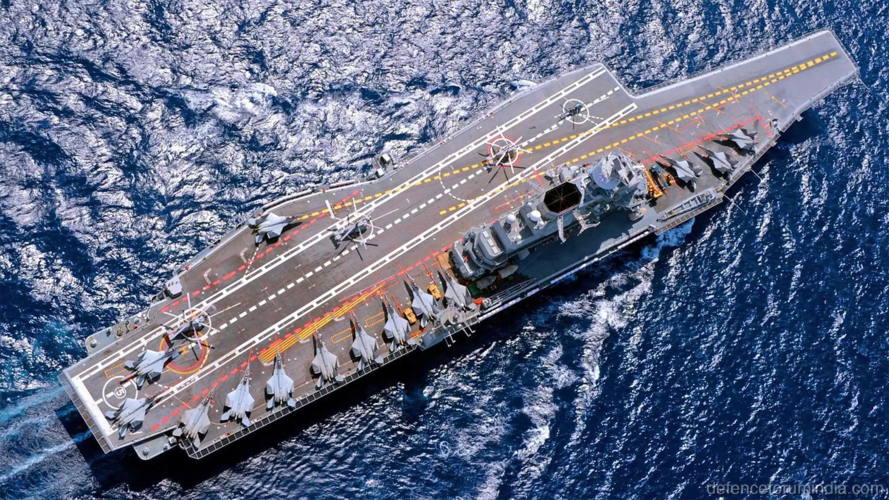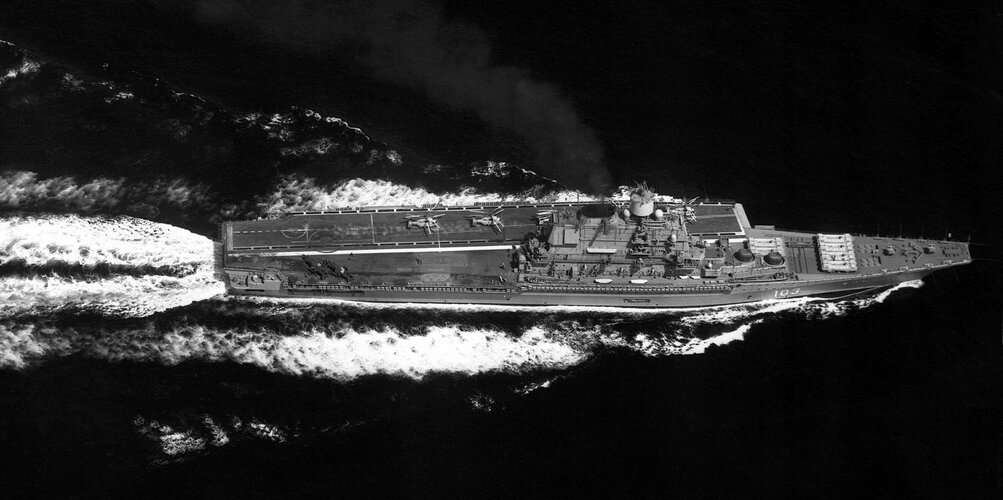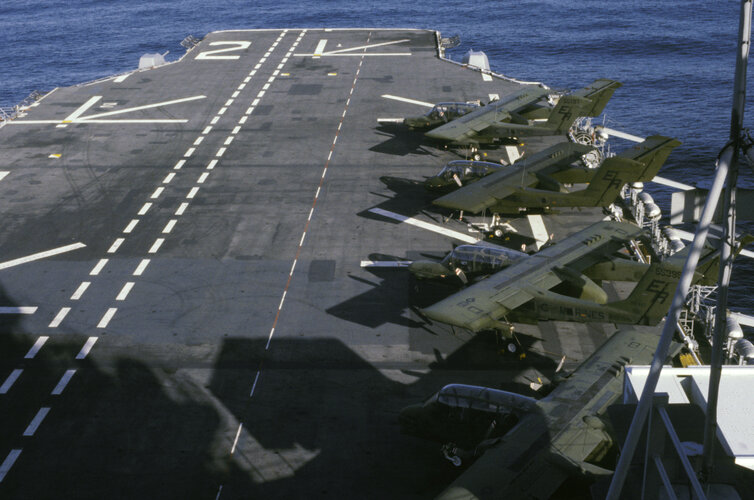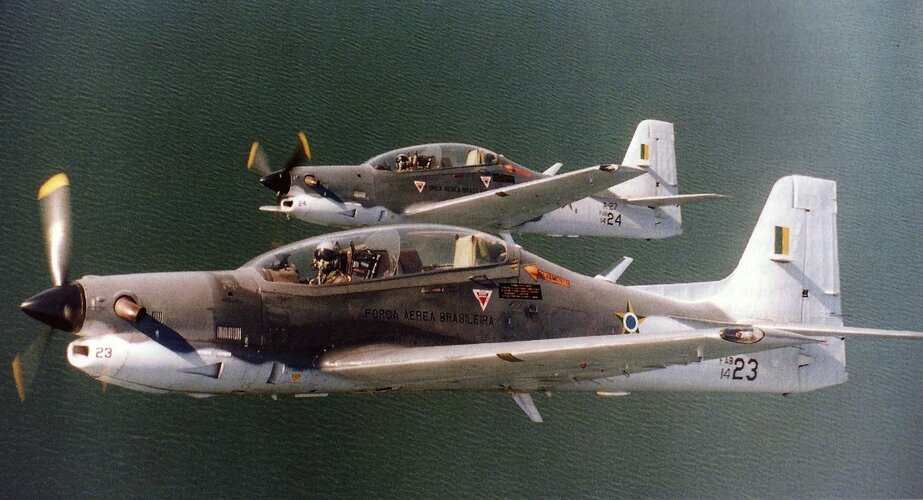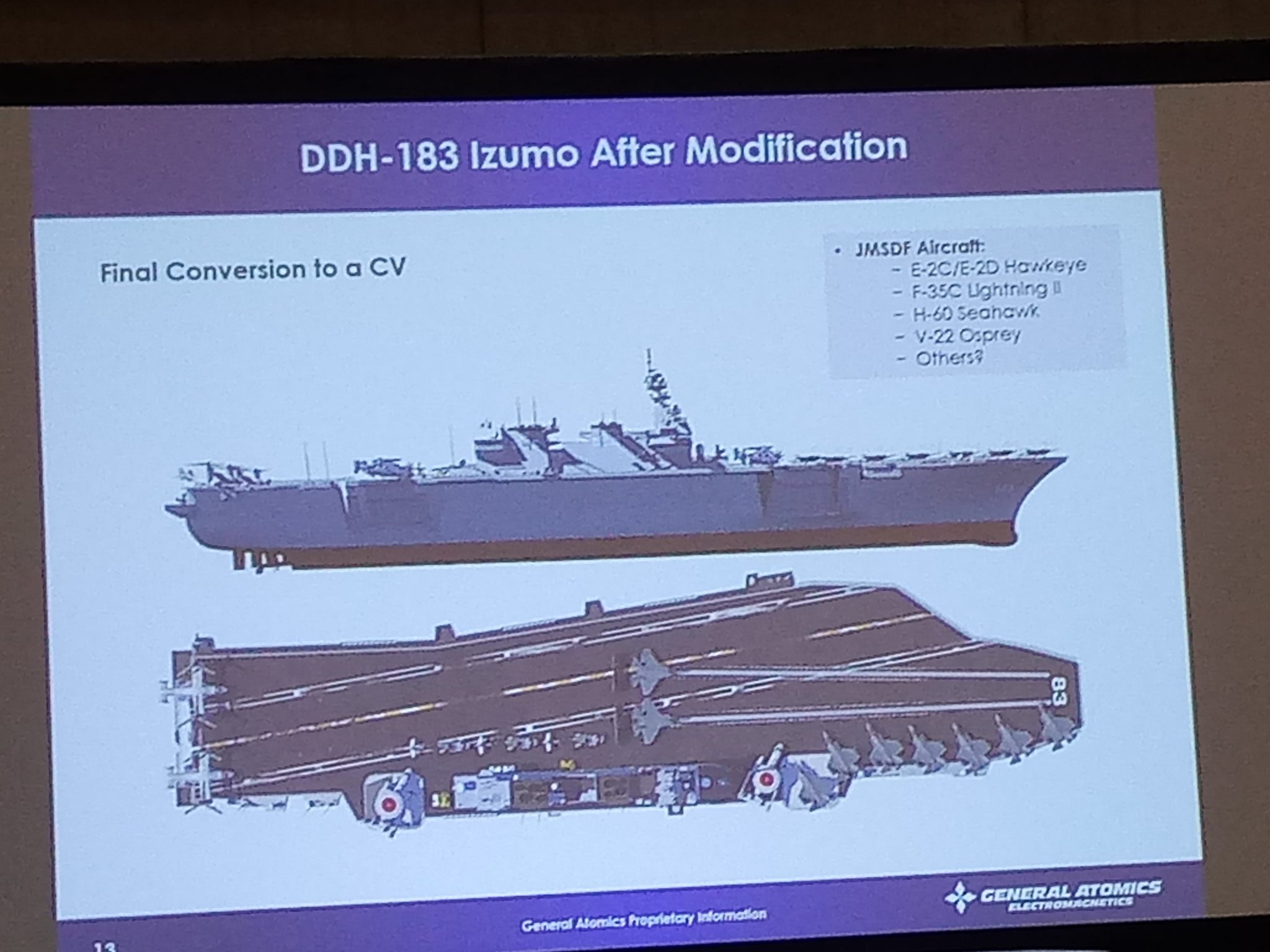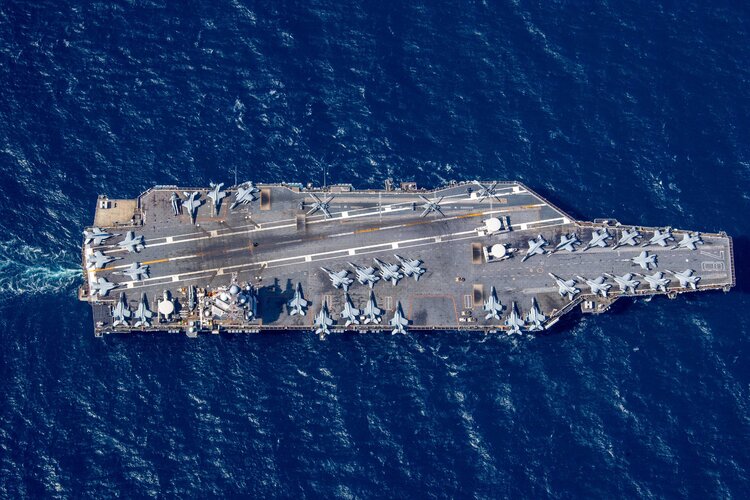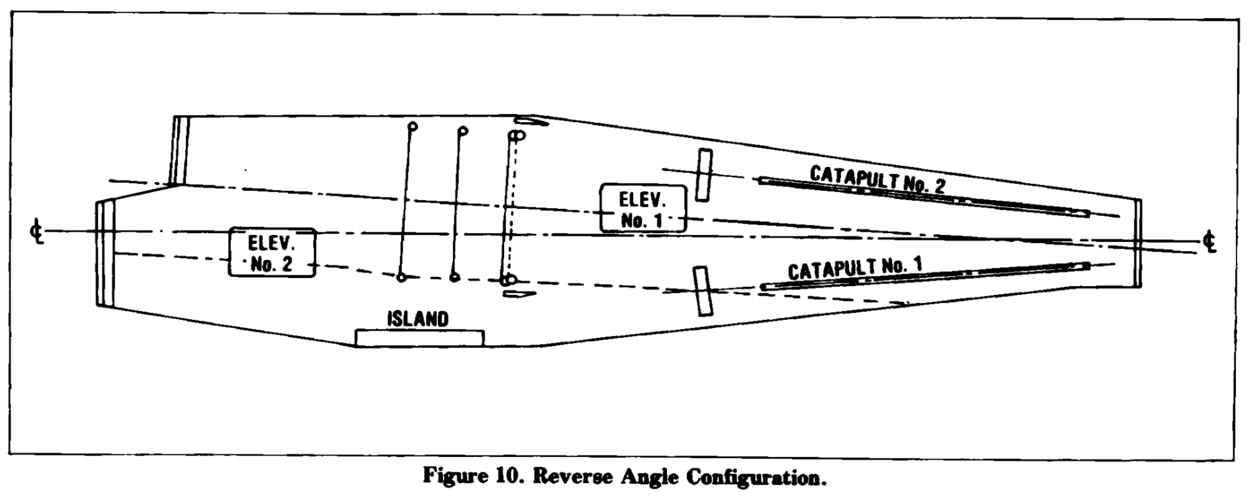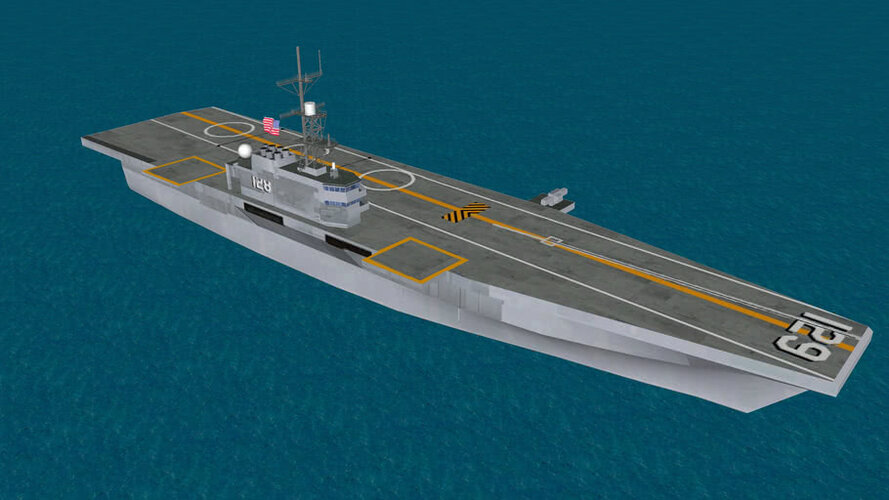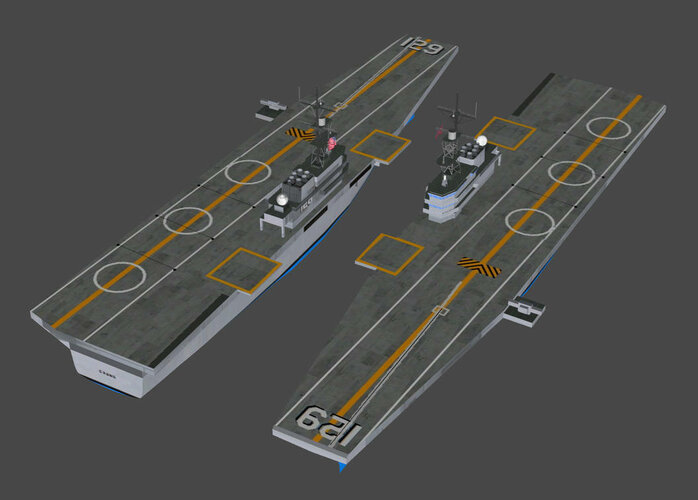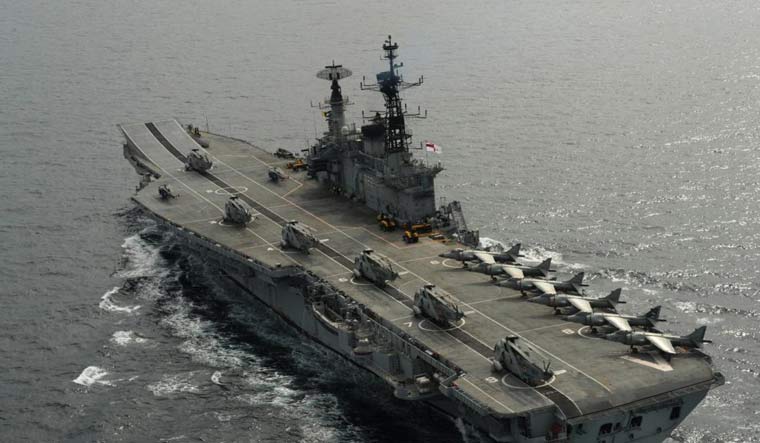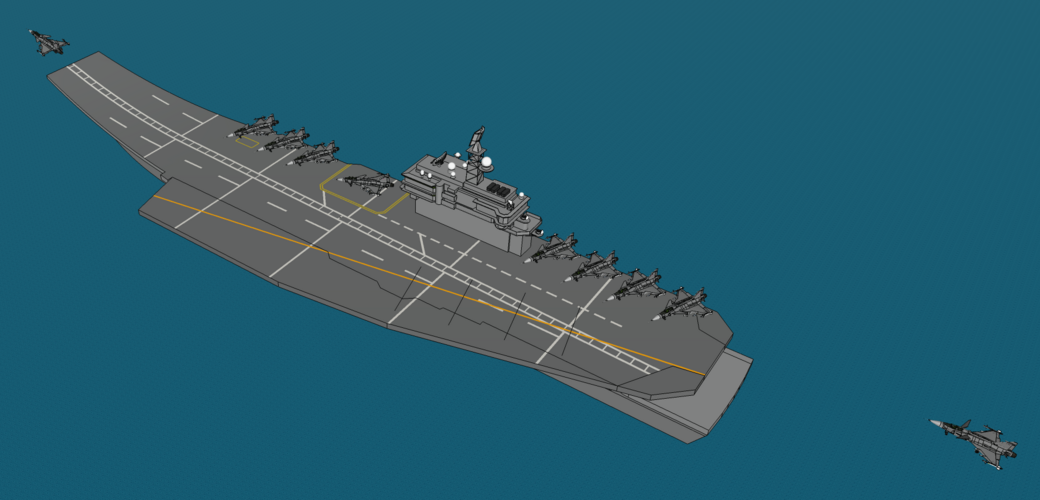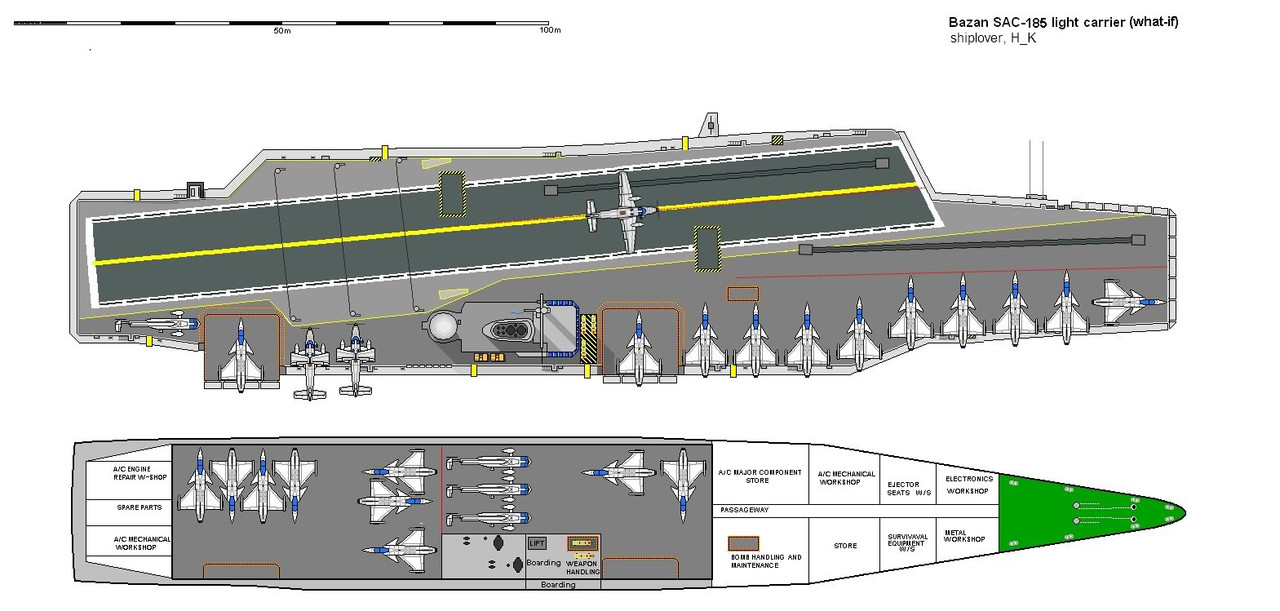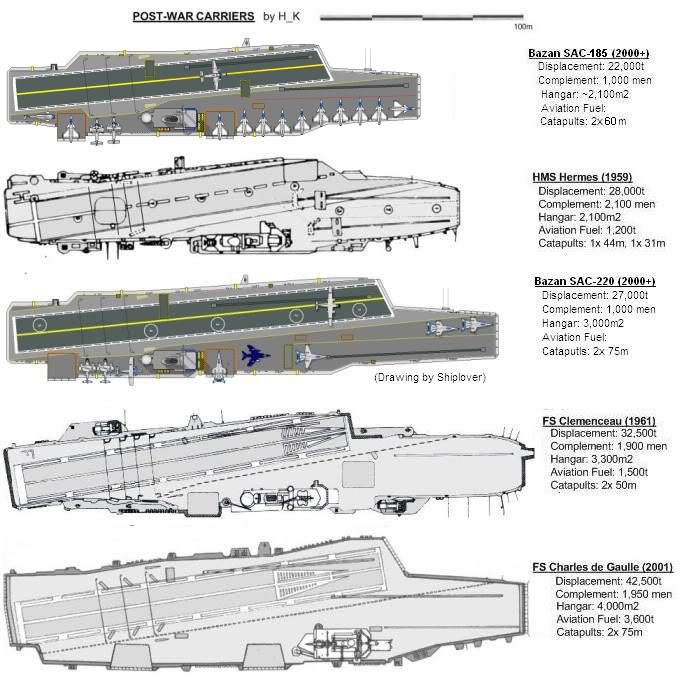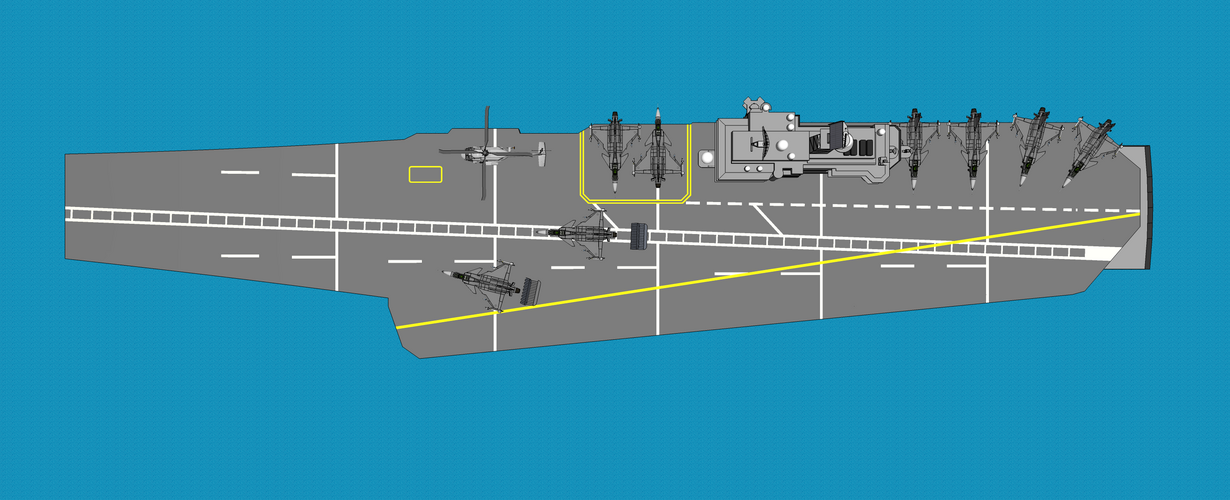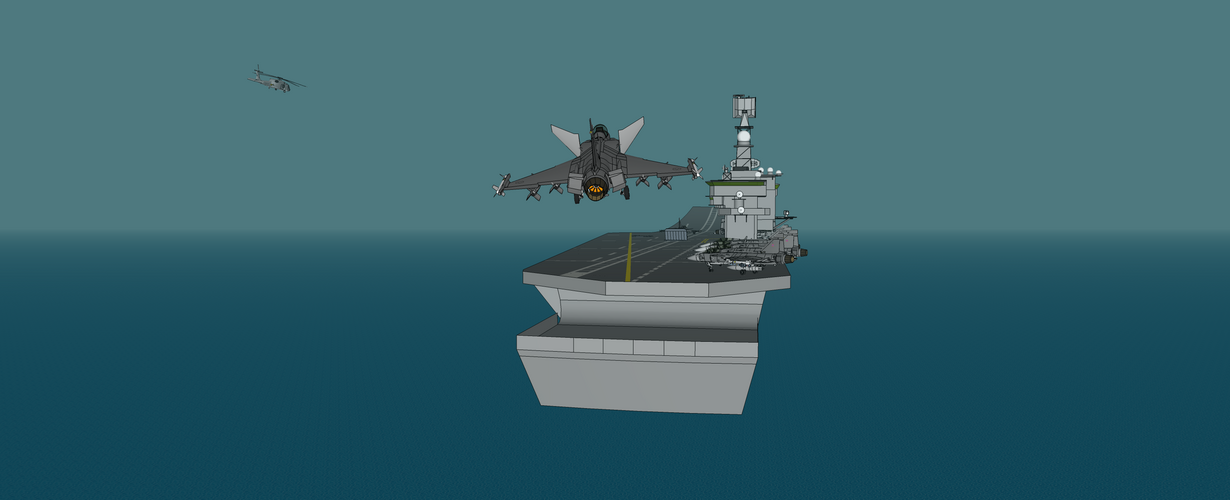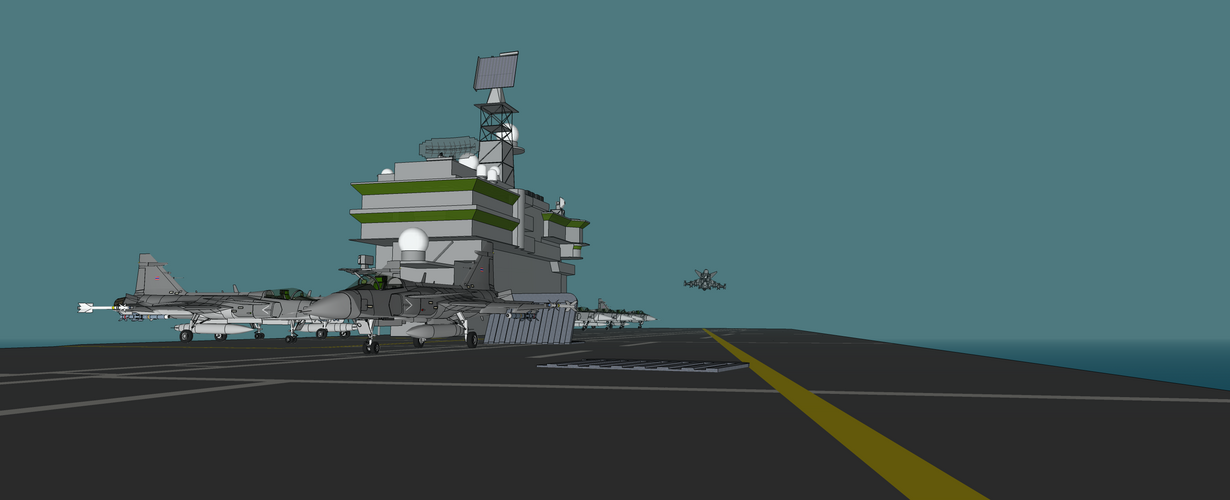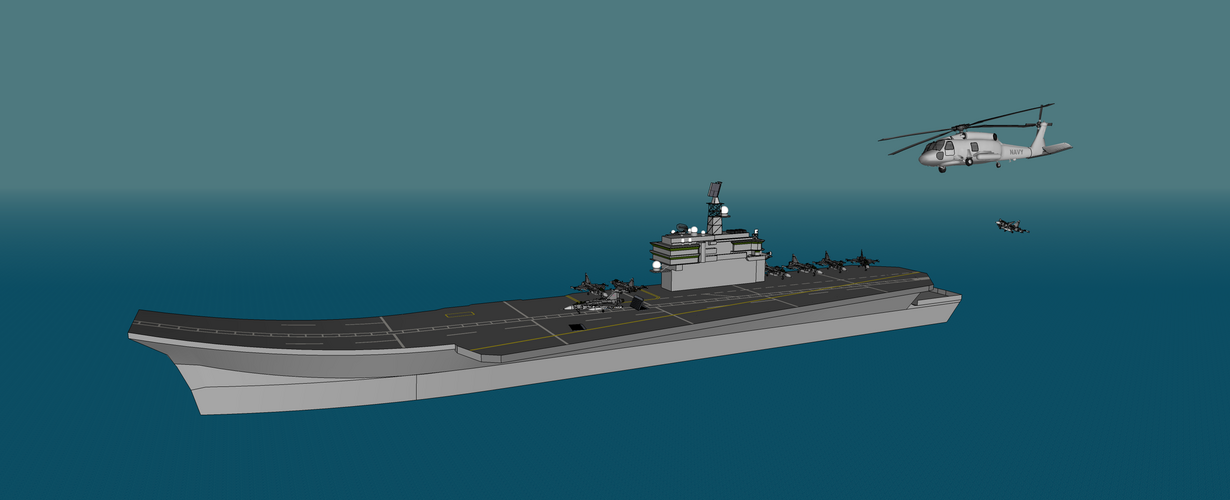F.L.
ACCESS: Top Secret
This idea came to me when I read the story of HTMS Chakri Naruebet. Since 2006, it has had no air group following the withdrawal of the Thai Navy's AV-8S Harriers and the failure to purchase AV-8B or Sea Harriers.
Would it be possible to convert an S/VTOL aircraft carrier for STOBAR operations with aircraft such as the Sea Gripen, Rafale M or Kızılelma for countries who are not able to purchase F-35B ?
Given that some vessels of this type already have a skijump (Chakri, Anadolu, Canberra), the main modification would be to add arresting gear.
Given that some of these ships are designed to operate few aircraft (6 on Chakri), the bolter is less a problem than on the old straight-deck aircraft carriers.





Would it be possible to convert an S/VTOL aircraft carrier for STOBAR operations with aircraft such as the Sea Gripen, Rafale M or Kızılelma for countries who are not able to purchase F-35B ?
Given that some vessels of this type already have a skijump (Chakri, Anadolu, Canberra), the main modification would be to add arresting gear.
Given that some of these ships are designed to operate few aircraft (6 on Chakri), the bolter is less a problem than on the old straight-deck aircraft carriers.
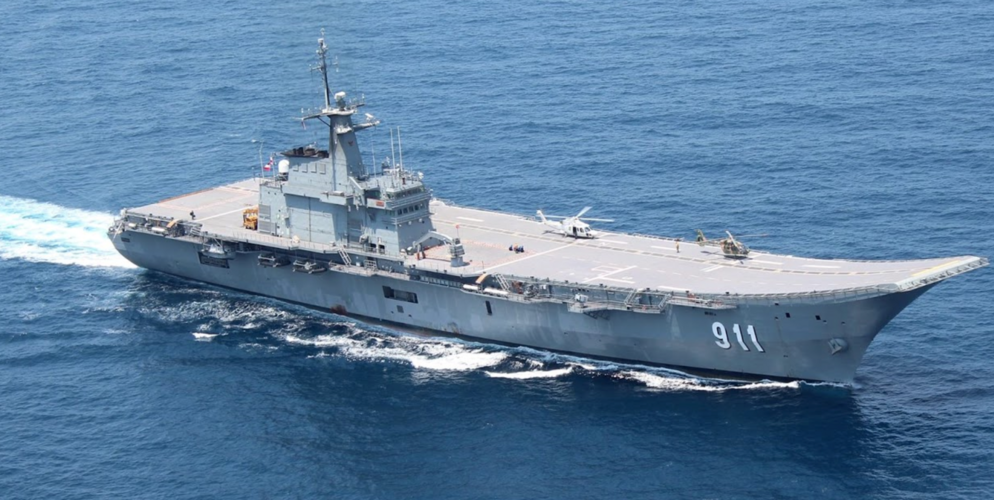
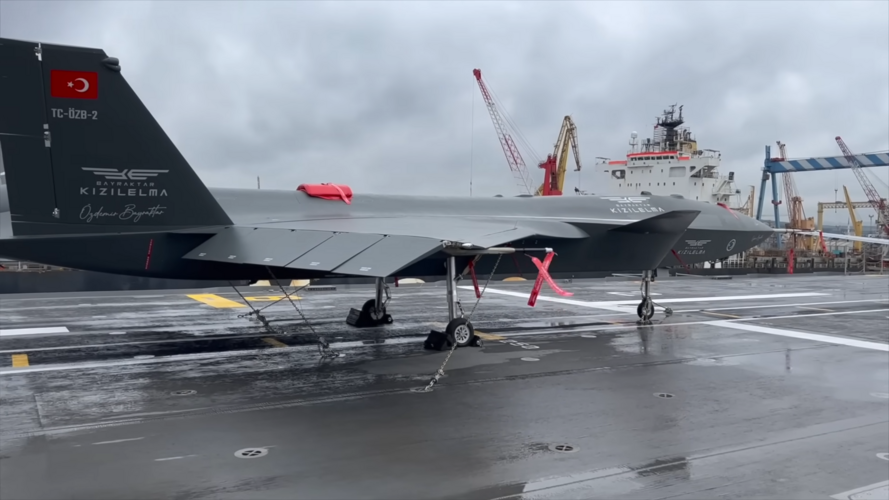
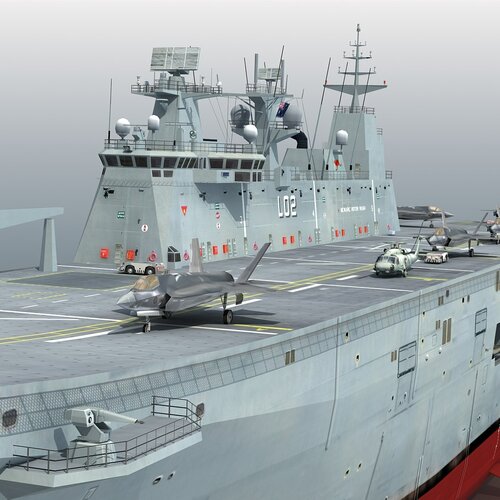
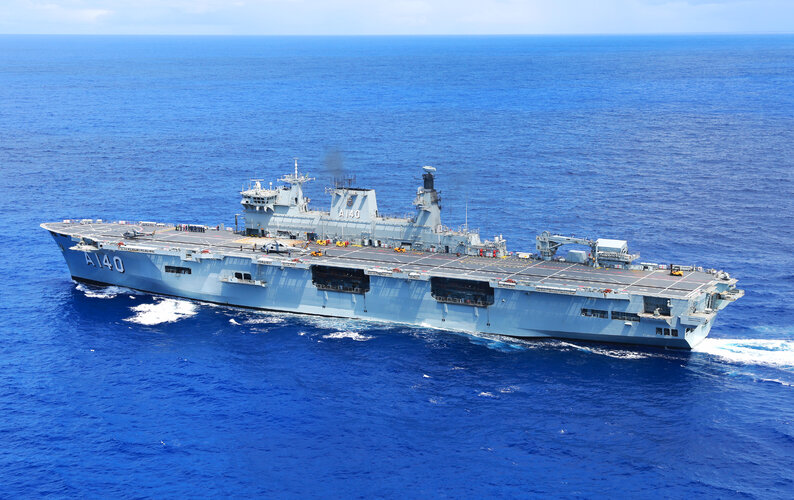
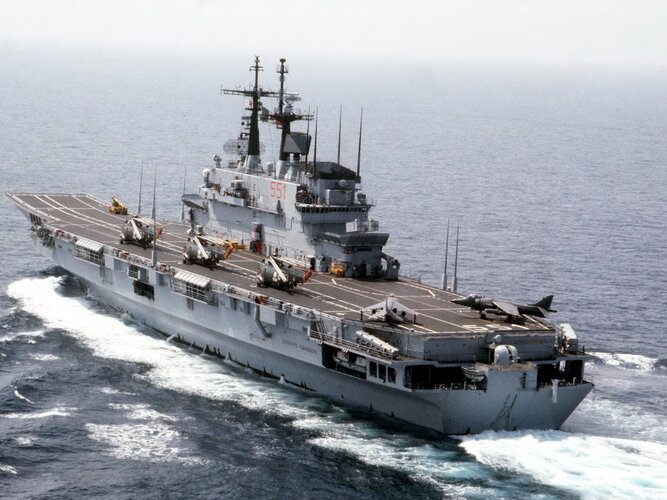
Last edited:

